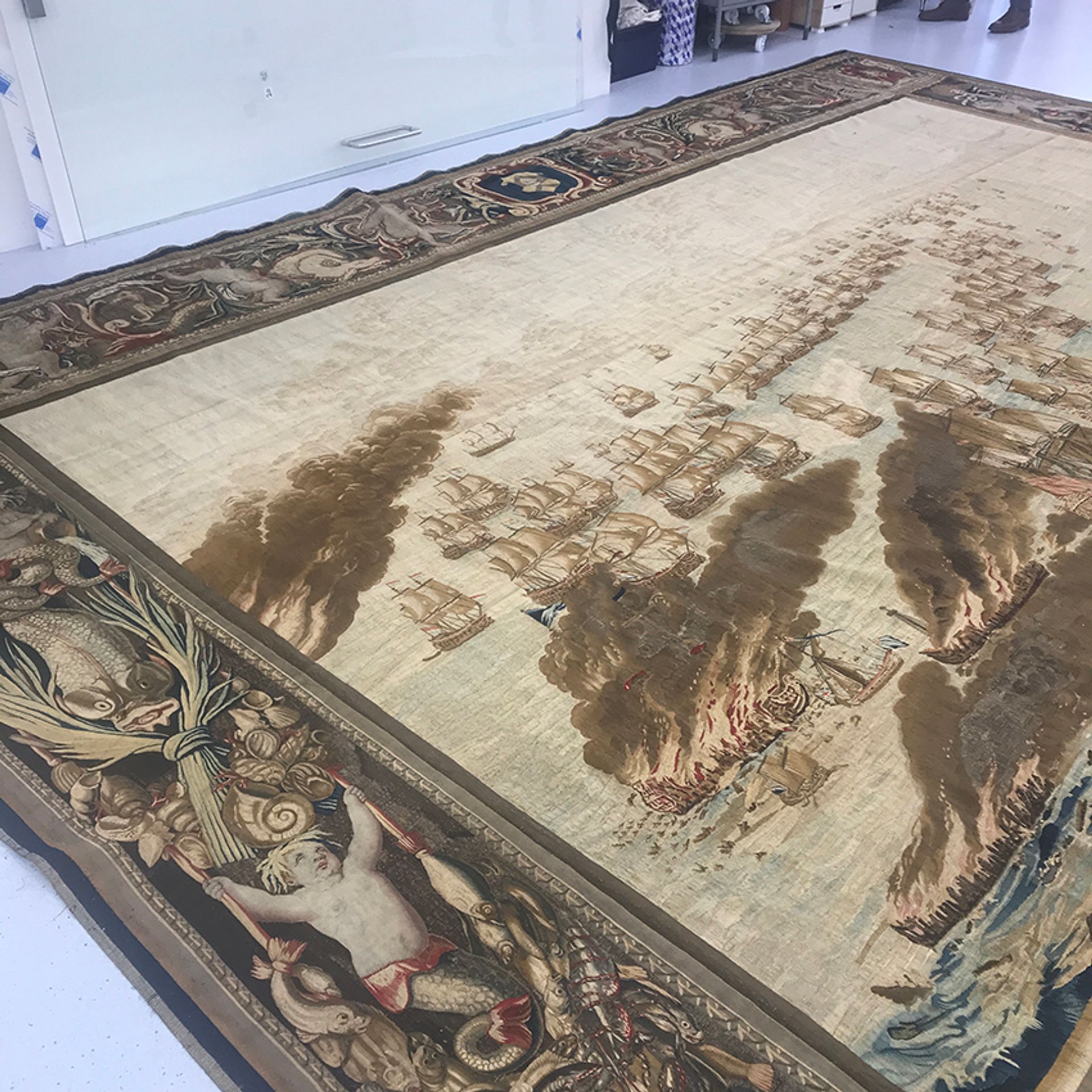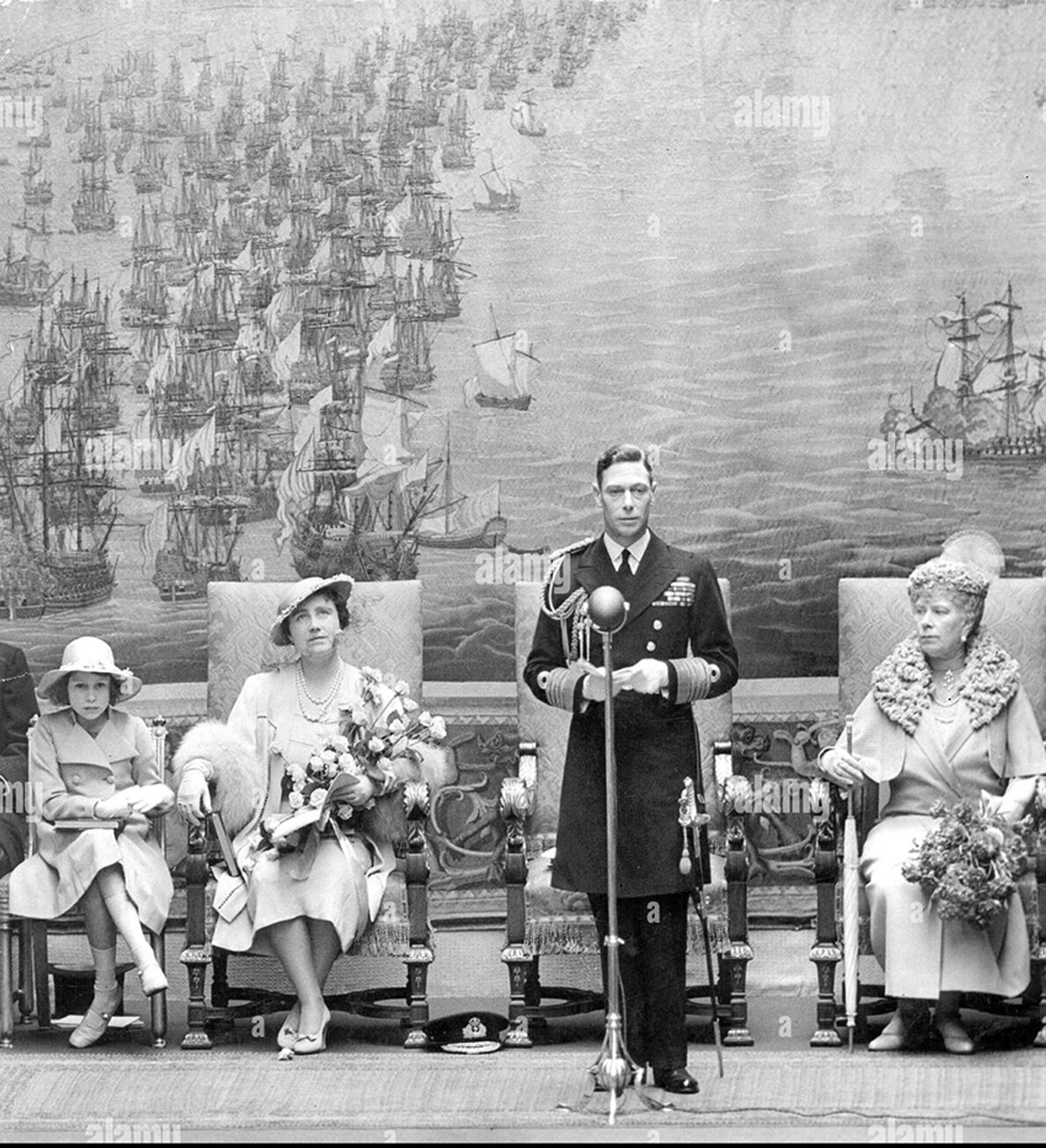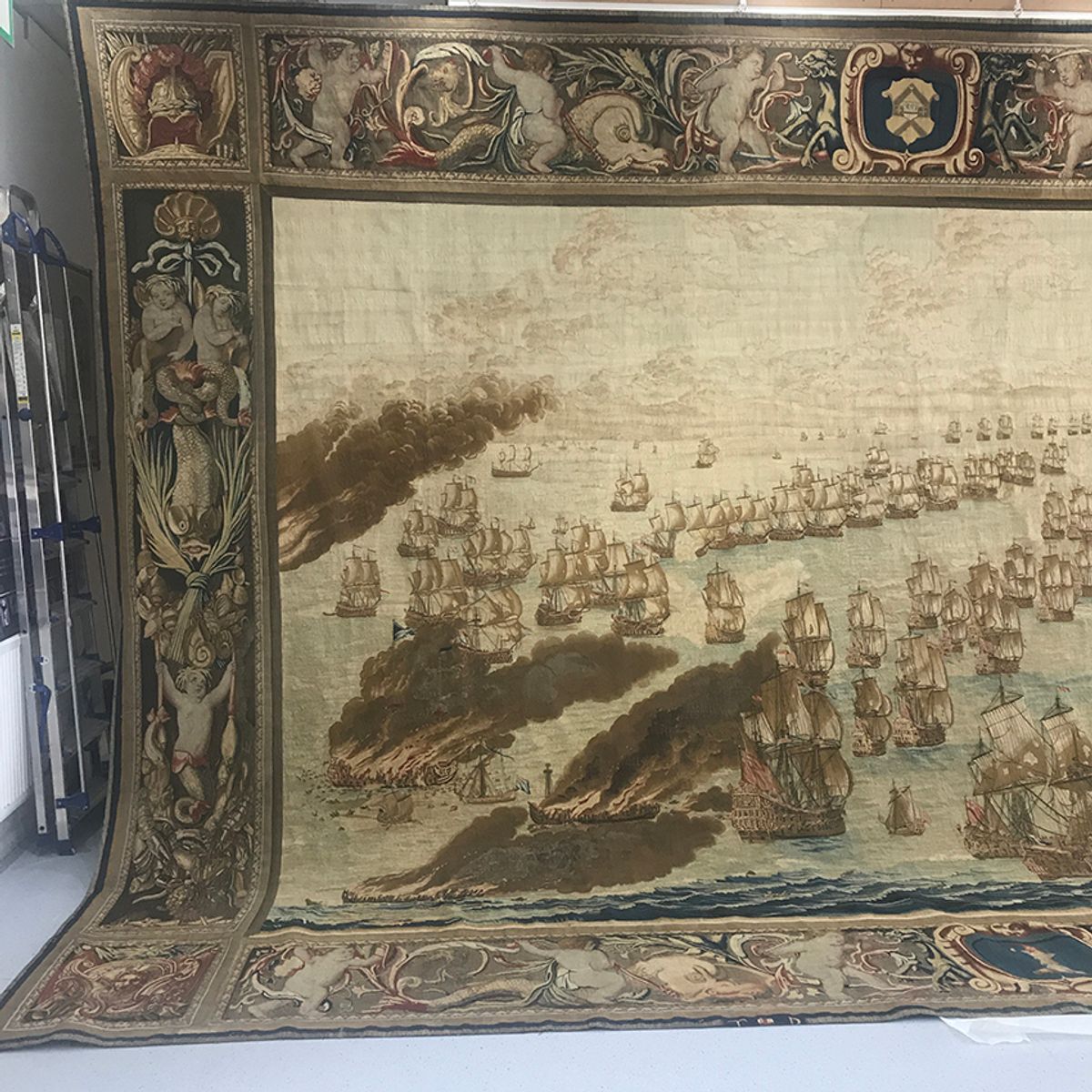A crowd funding campaign is being launched today by the National Maritime Museum in London to help restore one of the masterpieces in their collection—an enormous tapestry commissioned by Charles II celebrating a dubiously claimed English naval victory, and his brother James’s role in it. The quality of the silk and wool in the Mortlake tapestry is superb, but its condition is now so fragile it has not been on display for decades.
The tapestry is the most dramatic of the original set of six. Most showed the English and Dutch ships lining up for the Battle of Solebay, fought in May 1672 so close to Southwold in Suffolk that crowds lined the cliffs to watch. However the museum’s panel shows the climax with English ships including the flagship Royal James blazing, destroyed by Dutch fireships.

The Solebay Tapestry © Zenzie Tinker Conservation Ltd.
The Dutch had planned a surprise attack on the English fleet at anchor, and there are contemporary accounts of drunken sailors having to be dragged out of the town’s many taverns to crew the ships. The Duke of York, later King James II, survived despite having to transfer twice from wrecked ships. Admiral Edward Montague, Earl of Sandwich, drowned when too many desperate sailors jumped into the small boat in which he was escaping his blazing Royal James. His body was washed up weeks later and identified from his Order of the Garter insignia.
Both the English and Dutch claimed victory, even though the English lost more ships and more men. The tapestries, unusually depicting a contemporary event, were a propaganda exercise to nail the English claim. They were designed by an eye witness, the celebrated marine artist Willem Van de Velde the Elder who had actually been in a boat watching the battle—from the Dutch lines—but by 1673 was in England with his artist son, working for Charles. The Solebay panel was seen as so iconic that it hung as the backdrop when George VI formally opened the museum in 1937.

George VI opening the National Maritime Museum on 27 April 1937 © National Maritime Museum, London
The 5m by 4m tapestry still looks magnificent from the front with clouds and waves scudding across the central scene, and colourful borders writhing with sea creatures and baby mermen. However its true state was revealed in the Brighton conservation studio of Zenzie Tinker, where hand stitched repairs have begun on thousands of breaks and tears where the silk and wool is collapsing under its own weight. Its state has evidently been problematic for many generations; when the old backing was removed it revealed scores of rotting cotton patches which Tinker believes date from the 19th century.
The appeal is to raise £15,000, a fraction of the eventual full cost of work estimated at 120 hours of minutely detailed stitching on each of 29 sections. Once restored it is planned as the centrepiece of an exhibition next year in the Queen’s House at Greenwich where the Van de Veldes had their studio, now part of the museum, celebrating the 250th anniversary of the artists’ arrival in England.
The crowd funding appeal opens here today.


